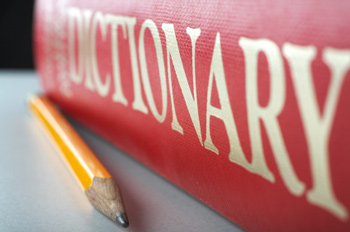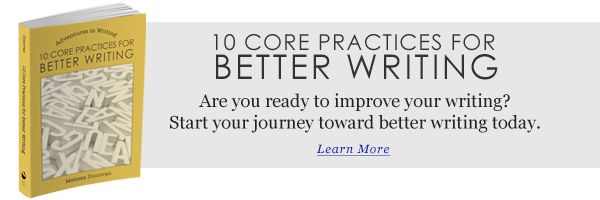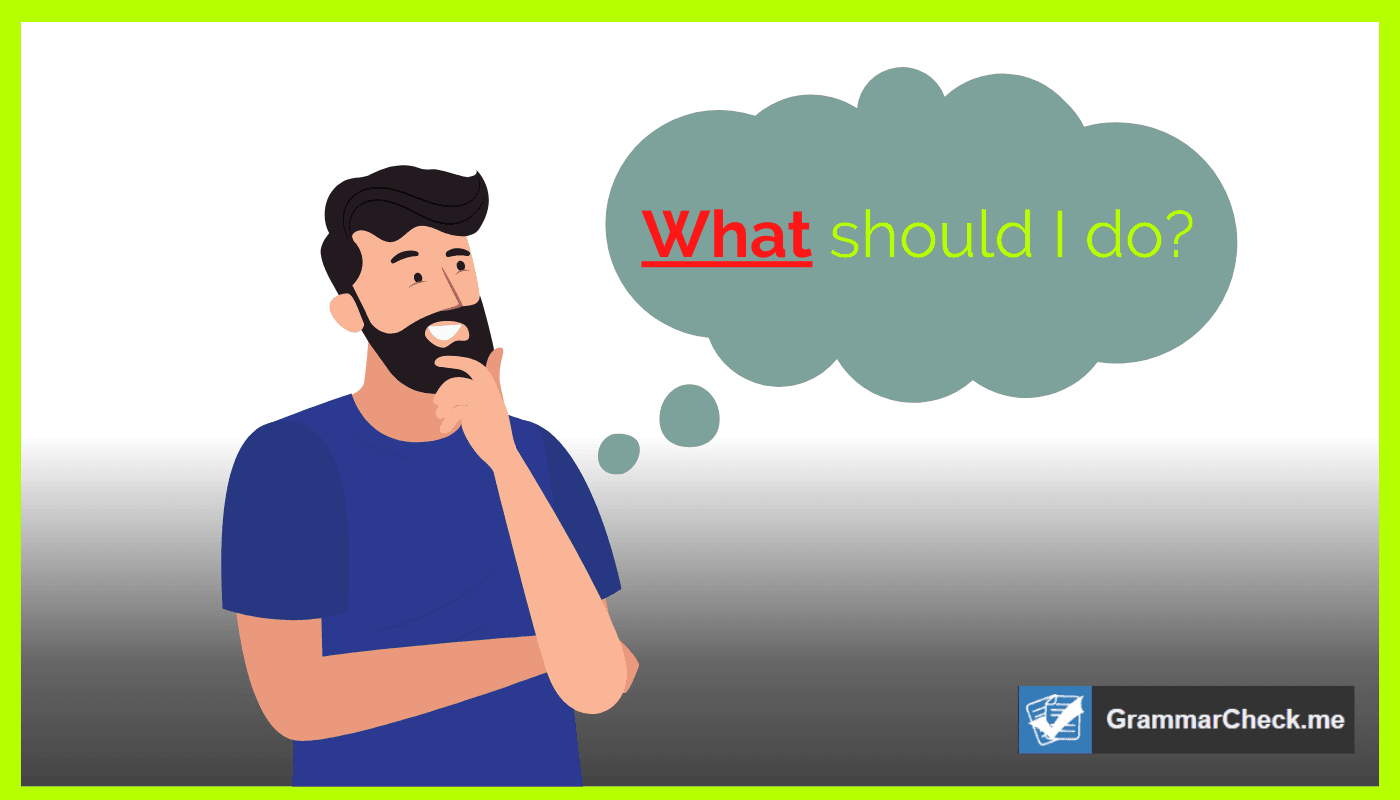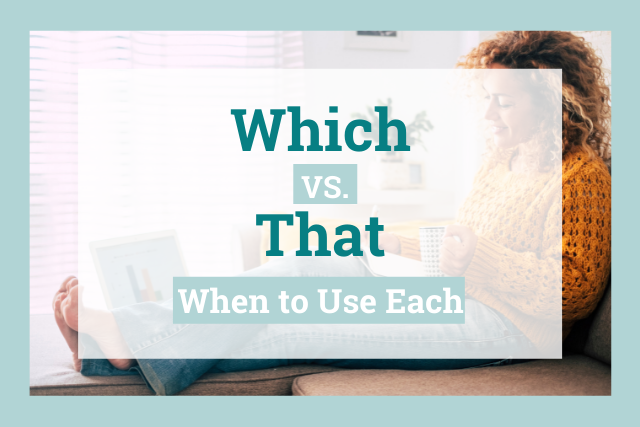Get the grammar rules for using that and which.
There’s a lot of confusion about that and which. These two words are often used interchangeably, even though they’re not necessarily interchangeable.
Historically, that and which may have carried the same meaning, and some English dialects may allow for that and which to be swapped without affecting the meaning of a sentence.
However, in American English, the grammar rules offer a distinct difference between the two words. By the time you’re done reading this post, you’ll fully understand the difference between that and which, and you’ll be able to use both words correctly.
That and Which
As with most grammar rules, there are exceptions and exemptions from the standard ways that and which should be used in a sentence. To gain understanding of confusing word pairs, it’s always best to start with the basics. As we look at how to properly use that and which, we’ll focus on simple, standard usage.
That and which can be categorized into several different parts of speech. Both words can function as adjectives and pronouns. Additionally, that can serve as a conjunction and as an adverb. Today, we’re looking at how that and which should be used when they are working as relative pronouns.
Relative Pronouns
From Wikipedia: “A relative pronoun is a pronoun that marks a relative clause within a larger sentence. It is called a relative pronoun because it relates to the word that it modifies.”
Like adjectives and adverbs, relative pronouns modify other words. Adjectives modify nouns:
- I have a car.
- I have a red car.
Adverbs modify verbs:
- I am walking.
- I am walking quickly.
The main difference between adjectives and adverbs is that adjectives usually modify things (nouns) while adverbs modify actions (verbs). Relative pronouns also modify words, but they often do so as clauses rather than as single, descriptive words. In the examples below, the clauses are italicized.
- Bring me the bucket.
- Bring me the bucket that has apples in it.
- The bucket, which has apples in it, is blue.
The difference between the words that and which and how they are used as relative pronouns depends on whether the clause they belong to is restrictive or nonrestrictive.
Restrictive and Nonrestrictive Clauses
Restrictive Clauses Are Necessary
A restrictive clause is necessary to the meaning of a sentence. For example:
- I want the bucket that has apples in it.
If you removed the clause “that has apples in it,” the meaning of the sentence would be lost. Nobody would know which bucket the speaker wants. The clause is necessary to the meaning of the sentence and is therefore a restrictive clause. Because it’s a restrictive clause, it should take the relative pronoun that.
Nonrestrictive Clauses are Unnecessary
A nonrestrictive clause is not necessary to the meaning of a sentence. In fact, it can be removed from a sentence without affecting its meaning. For example:
- The bucket, which is blue, has apples in it.
- There are apples in the bucket, which is blue.
If you removed the nonrestrictive clause “which is blue,” from either of the sentences above, the meaning of the sentences would not be lost. We’d still know that the bucket has apples in it. Note that in the second example, the nonrestrictive clause adds information about something that has already been identified. Because the clause is unnecessary to the meaning of the sentence, we know it’s a nonrestrictive clause, and therefore should take the relative pronoun which.
- Use that before a restrictive (necessary) clause.
- Use which before a nonrestrictive (unnecessary) clause.
The Easy Way to Remember the Difference Between That and Which
I Needed That
If you need the clause to maintain a sentence’s meaning, then use that. A quick trick for remembering this grammar rule is the phrase “I needed that.”
Which?
Because which is also an interrogative pronoun used to mark questions, it is questionable. You can take it or leave it. It’s not necessary. Think of the word which with a question mark (which?) to remind yourself that if the clause’s presence is questionable and can be removed, then you should use the word which to introduce the clause.
Exceptions and Notes
Here are some exceptions and notes to these rules:
- Which can be used restrictively when it’s preceded by a preposition. For example, “The bucket in which the apples have been stored is blue.”
- Which is almost always preceded by a comma, parenthesis, or a dash.
- In British English, there is little distinction between that and which.
Has this article helped clarify any questions you’ve had about grammar rules? Do you have any other questions about that and which? Do you have any tips to share for remembering how to use these two words? Leave a comment.
Sources (aff links):
- The Chicago Manual of Style
- Grammar Girl, “Which Versus That“
- Wikipedia, “Relative Pronouns“
Using “Who,” “That,” and “Which” Correctly
powered by
LanguageTool
When modifying or describing a noun phrase, should you use “who,” “that,” or “which?” We’ll explain when to use these words and if they require commas.
- Use who when introducing a clause that describes or modifies people.
- Use that when introducing a clause that describes or modifies objects or non-human things.
- Use which when introducing a clause that describes or modifies objects.
- ○ Clarissa, who has been my friend since first grade, got married last summer.
- ○ The most popular menu item is a chocolate chip cookie that is stuffed with an Oreo.
- ○ My sunglasses, which I bought last week, were stolen.
Steven is a writer ____ seemingly became famous overnight.
Do you know whether to fill in the blank with who, that, or which?
The answer is who.
Steven is a writer who seemingly became famous overnight.
If you didn’t answer correctly, don’t worry. We’re here to put an end to the confusion behind the relative pronouns who, that, and which.
To begin, relative pronouns connect noun phrases to a relative clause that modifies or describes it. Consider the following example:
The cake that Alison baked was delicious.
Here, that connects the noun phrase (the cake) to the relative clause (Alison baked was delicious). Who, whom, whose, which, and that are all relative pronouns.
The type of relative pronoun used depends on the noun phrase (antecedent) and the relative clause that’s modifying it. A non-restrictive clause (non-essential or non-defining) is usually preceded by a comma, whereas no comma is needed before restrictive clauses (essential or defining).
Using “Who” as a Relative Pronoun
Use who as a relative pronoun when connecting it to a relative clause that describes a person or a group of people. Who can be used in both restrictive (defining) and non-restrictive (non-defining) clauses.
My mother, who has diabetes, has to always be careful with what she eats.
In this example, who has diabetes is not essential to the sentence. In other words, the sentence still makes sense even if it’s removed.
The employee who sells the most tickets will win an award.
Here, the clause sells the most tickets is restrictive because it cannot be removed from the sentence without changing the meaning.
Using “That” as a Relative Pronoun
Some writers mistakenly use that in place of who. You may have even come across a text in which that to introduce a clause that describes people, but this is considered colloquial or informal. Keep this in mind: that is used for objects and non-human things.
That is also only used for restrictive clauses and therefore doesn’t require a comma. Consider the following examples:
Those are the products that were recalled.
That’s the Christmas tree that Jonas wanted to buy for his grandfather.
I like cats that are friendly.
Using “Which” as a Relative Pronoun
Because which is also used to introduce a clause that describes objects, it’s often incorrectly used in place of that (or vice-versa). Which is used to introduce a non-restrictive clause and therefore requires a comma before and after.
The monument, which has been part of this town for 50 years, was vandalized.
Jordan wanted to buy the used truck, which was falling apart, for $5,000.
My grandma’s house, which has been part of the family for generations, was getting remodeled.
LanguageTool Is a Text Editor That Can Enhance Your Writing
We only focused on the relative pronouns who, that, and which, and still, we covered a lot of ground. Here are the most important points to remember if you want to make sure to use them correctly:
Relative Pronouns
- Who introduces a clause that describes people. It only needs a comma if it’s introducing a non-essential clause.
- That introduces a clause that describes things or non-human objects, and a comma is never required for that because it’s only used in essential (restrictive) clauses.
- Which also introduces clauses that describe objects, but requires a comma because it introduces non-essential clauses.
- LanguageTool—a multilingual text editor—can detect incorrect relative pronouns and offer corrections.
Unleash the Professional Writer in You With LanguageTool
Go well beyond grammar and spell checking. Impress with clear, precise, and stylistically flawless writing instead.
Get started for free
We Value Your Feedback
We’ve made a mistake, forgotten about an important detail, or haven’t managed to get the point across? Let’s help each other to perfect our writing.
Finally master what vs which grammar rules with help from this article!
There are many commonly confused words in the English language, making it even more challenging to learn than it already is for non-native speakers and students. Two words that are often confused – even by native English speakers – are “what” vs “which.” The question is, which word do you use and when?
Keep reading to learn the “what” vs “which” grammar rules to know which word to use in your sentences. As a bonus, you’ll also get clarification on other commonly confused words to improve your grammar and vocabulary.
The Meaning of “What”
First things first: what exactly does “what” mean?
While the word seems basic, and you regularly use it in your everyday speech, having a thorough understanding of the meaning will help you differentiate it from “which.”
Takeaway: “What” is one of the main wh– words, which include who, where, what, and when. “What” can be used as a pronoun, determiner, or adverb.
- When used as a pronoun, “what” is used to ask for information specifying something. An example is asking someone, “What is your name?”
- As a determiner, “what” can be used the same way, referring to the whole of an amount. Here’s an example: “We offered her what little we had.”
- As an adverb, “what” can be used similarly to the word “how” to ask a question. Here’s an example: “What’s it matter to you?” This is a more informal use of the word “what,” but still a common one.
You may see the similarity between the different uses of the word—the word “what” is used in all three instances to ask for information. Just like the words yet and but, you need to pay close attention to the context of the sentence to use them correctly.
The Meaning of “Which”
While it isn’t in the original list of wh– words, “which” also asks questions and introduces relative clauses.
A relative clause, also known as an adjective clause, connects ideas with pronouns relating to something previously mentioned so you can combine two independent clauses into one sentence.
Here’s an example of “which” in a sentence before a relative clause:
- Washington, D.C., which is the capital of the United States, is a city with many diplomats.
In the sentence above, the relative clause is “the capital of the United States,” and the word “which” introduces that.
“Which” is also used as a question word. Just like with the words in page vs on page, you have to pay close attention to the context of the sentence. Similar to the word “what,” which can be used as a determiner or interrogative pronoun to ask for specific information, as in the following example:
- Which one is your favorite?
- Which movie did you decide on yesterday?
- Which parent is picking you up today?
“Which” is also used for indirect questions and statements as well. Here’s an example:
- If you ask Jack which day they’re going to the beach, we’ll figure out if we can join.
Now that you understand both “what” and “which,” let’s figure out when to use each of these words.
Both “which” and “what” are used to ask questions. There are instances where each word looks like it may work in a sentence, just like with the words axel vs axle. However, it’s only ever grammatically correct to use one of the words, and it’s important to figure out which one it is.
As a general rule, “which” is used when there is a limited range of answers to the question. “What” is used when there isn’t a limit on the range of answers to the question.
Take the following examples:
- Which country has more people, France or England?
- What are your favorite songs from this year?
In the first example, there are only two options to choose from, France and England, which makes it more appropriate to use “which” due to the restricted nature of the choices. If the sentence did give options and was instead more general, “what” would be more appropriate. For example, the sentence could become “What country has the most people?”
In the second example, there’s no limit to the songs to pick from, so “what” is the better grammatical choice in this sentence. For “which” to be the better choice in this sentence, we’d need to restrict the song choices. For example, the sentence can become “Which artist had the best song from this year, Taylor Swift or Drake?”
Other Commonly Confused Words
English has an abundance of commonly confused words. Here are a few others that you should know.
1) Than vs Then
“Than” vs “then” are two commonly confused words with different meanings. “Than” is a conjunction used to compare two things. This is very similar to the everyones or everyone’s grammar rules. “Then” is usually an adverb that indicates time.
Here are two examples:
- In my opinion, pizza is better than sushi.
- We had dinner, and then we went to a movie.
2) That vs Which
“That” and “which” are similar to “what” vs “which” grammar rules in the way they’re used.
“That” is used when the phrase or clause that follows it is necessary for the sentence. Meanwhile, “which” is used when the phrase or clause that follows it is unnecessary.
Here are two examples:
- Children that have tutors usually perform better in school.
- Christmas, which is my favorite time of year, is just around the corner.
3) Who vs Whom
Although “whom” is not often used in everyday writing and speech, it’s still important to know the difference between who and whom.
“Who” is a pronoun that is used as a sentence’s subject. “Whom” is a pronoun that is used as a direct object.
Here are two examples:
- Who is going to wash the dishes?
- To whom was the letter addressed?
Final Thoughts
“What” vs “which” grammar rules may seem confusing at first, but they become simpler to understand as you keep using each word. If you need help figuring out how to get commonly confused words right, Grammarly can help you point out your mistakes.
Many people use “which” and “that” interchangeably but the two words are not synonymous.
“Which” and “that” both refer to something previously mentioned when introducing another clause.
The difference between them is “which” introduces a non-essential clause and “that” introduces an essential one.
Read on to learn how to identify clauses and subsequently use the right word every single time.
The Trick for Remembering Which vs. That
There’s a simple trick to remember the difference:
If your sentence has a clause but does not need it, use “which”; if the sentence does need the clause, use “that.”
Before we look at when to use “that” or “which,” let’s quickly discuss what a clause is.
What Is a Clause?
A clause is a group of words that contains a subject and a predicate.
A subject is the thing that the clause is about. A predicate contains the verb and says something about the subject.
Examples of clauses are:
- When I was running (dependent)
- That went missing yesterday (dependent/adjective)
- I ate pasta and apple crumble (independent)
There are two main types of clauses: independent and dependent.
Dependent clauses can be split further into noun and adjective clauses.
Within these categories, there are two types of noun clauses, restrictive and non-restrictive, which are essential to understand the difference between “which” and “that.”
Which vs. That: Let Us Explain
The clause that comes after the word “which” or “that” is the determining factor in deciding which one to use.
If the clause is essential to the meaning of the sentence, you use “that.”
If you could drop the clause and leave the meaning of the sentence intact, use “which.”
For example:
- The school that burned down last week is still smoking.
- The school, which burned down last week, is next to Mila’s restaurant.
In the first sentence, the clause “that burned down last week” is essential because it identifies the school that is still smoking. Without the clause, we could refer to any school. With an essential clause, use the word “that.”
In the second sentence, the clause “which burned down last week” is non-essential because it is unnecessary to identify the school. Without it, the sentence would still make sense. With a non-essential clause, use the word “which.”
How to Use Commas with Which vs. That
“Which” and “that” are relative pronouns that begin adjective clauses. Both tell us a little more about the noun they follow.
The clauses that start with “that” are called restrictive because they ONLY tell us about the noun being discussed and are not surrounded by commas.
The “which” clause is non-essential or non-restrictive and is always set off from the rest of the sentence with commas.
Examples of When to Use Which vs. That
- The old schoolhouse, which is one of my favorite historical sites to visit, is in dire need of renovation.
In this case, you could drop the clause “which is one of my favorite historical sites to visit” and the sentence would still make sense.
On the flip side, try this example:
- The type of antibiotic that the doctor prescribed made me nauseous.
Clearly, it’s not just any antibiotic, but the one the doctor prescribed that made you sick to your stomach. The sentence without the clause doesn’t make sense.
Start Editing Like a Pro
Once you’ve checked your use of “which” and “that,” use ProWritingAid to make sure the rest of your sentence is stylistically and grammatically correct, too.
Our Realtime report lets you see and fix grammar, style, and spelling issues quickly. If you would like to know more about a suggestion, just click on the orange “i.”
You’ll see articles and videos to help you learn as you edit.
Extended Example of Which vs. That
In some sentences, both “which” and “that” are grammatically correct but provide slightly different meanings, like in the example below.
- Our home, which has four bedrooms, is located in the Caribbean.
- Our home that has four bedrooms is located in the Caribbean.
The first sentence discusses the location of your only home and it just so happens to have four bedrooms. Lucky you, it’s in the Caribbean.
The second sentence points out that the home you own with four bedrooms is located in the Caribbean, which means you have more than one home. “That has four bedrooms” is how you distinguish between your many homes.
Which vs. That: Quiz
Now that you know how to use “which” and “that,” are you ready for a quick test? I have omitted all commas because otherwise it would be too easy.
1) The lion __ I saw at the zoo scared me.
2) My summer chemistry project __ I handed in yesterday got an A!
3) My dress __ I wore last week has a hole in it.
4) My boat __ is at the summer house in Devon was repainted last week.
5) Jupiter __ is next to Saturn is the largest planet in our solar system.
Answers: 1) either 2) which 3) that 4) either 5) which
A big congratulations if you got all of them right because I was a little mean with sentences 1 and 4. Both the words “that” and “which” are grammatically correct depending on whether you have seen lions in the wild and how many boats the speaker has.
In sentence 4, if they have multiple boats then “that” is correct because it is necessary to identify which boat they are discussing. If they only have one boat then “which” is correct because we would already know where the boat is located and therefore the clause is not essential.
As a writer (me) once said:
“That which confuses you can only make you a better writer.”
Do you have any sentences like this that use both “which” and “that”? Share them in the comments.
Take your writing to the next level:
20 Editing Tips From Professional Writers
Whether you are writing a novel, essay, article or email, good writing is an essential part of communicating your ideas.
This guide contains the 20 most important writing tips and techniques from a wide range of professional writers.

Which is a wh-word. We use which to ask questions and to introduce relative clauses.
Which as a question word
We use which in questions as a determiner and interrogative pronoun to ask for specific information:
‘Which car are we going in?’ he asked Alexander.
Which museums did you visit?
Which do you prefer? Lemon cake or carrot cake?
We use which in indirect questions and statements:
In the Young Cook of Britain competition, the finalists were asked which famous person they would like to cook for.
Find out which way they’re going and we’ll follow.
Which or what?
We use both which and what to ask questions. We use which when there is a restricted range of answers. We use what more commonly when the range of answers is not restricted:
Which is the capital of Liberia? Monrovia or Greenville?
What’s the capital of Liberia?
Which in relative clauses
We use which in relative clauses to refer to animals and to things:
We have seen a lot of changes which are good for business.
The cruise ship, which will depart from Liverpool for a fifteen-night Mediterranean cruise, returns to the Mersey on 29 September.
We also use which to introduce a relative clause when it refers to a whole clause or sentence:
She seemed more talkative than usual, which was because she was nervous.
People think I sit around drinking coffee all day. Which, of course, I do.
We often use which with prepositions. Some formal styles prefer to use a preposition before which rather than to leave the preposition ‘hanging’ at the end of the sentence:
There are several small ponds in which a variety of fish live. (or There are several small ponds which a variety of fish live in.)











